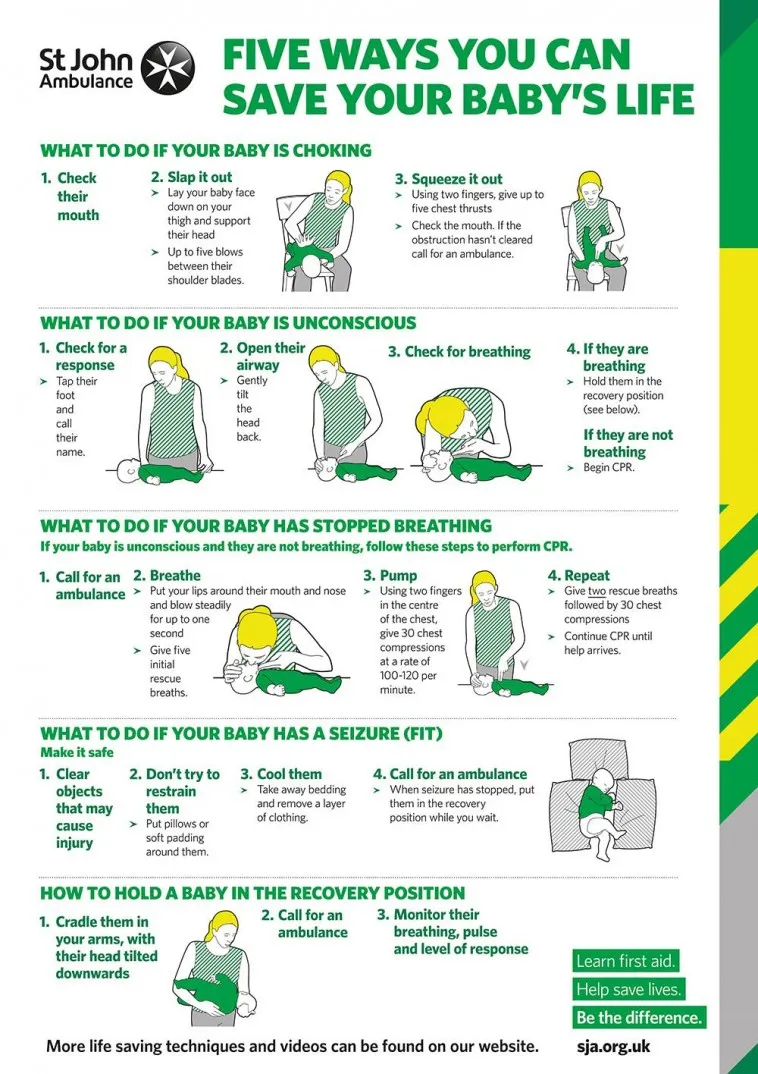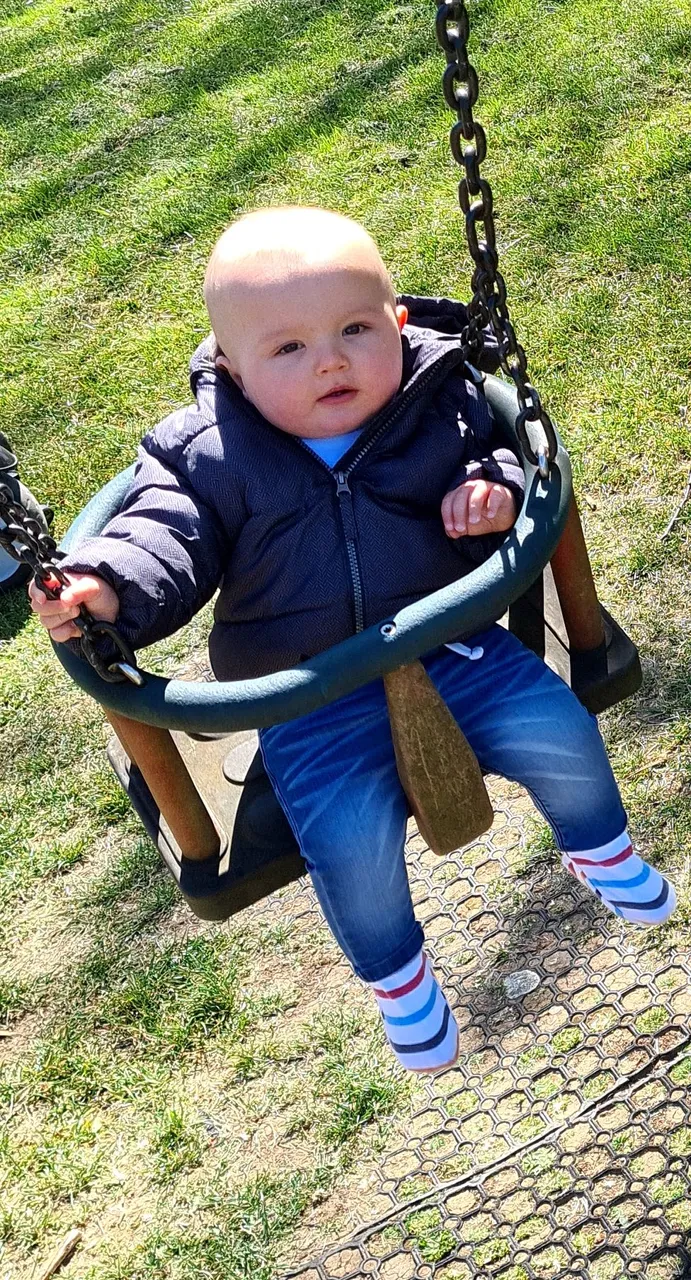Hi everyone today my post has a special meaning to me as some of you are aware I have full custody of my ten month old!
Now as a parent you try your very best to be prepared for the little ones arrival but many of us don't think about knowledge we should also possessed!
My little one was born and everything was great we got him home and one day disaster struck I had just changed his bum noticed he was going blue and not breathing two minutes beforehand he was absolutely fine! He went limp I thought it must be either chocking or something along thoes lines I put him flat on his belly in my arms and opened his airways mucus started pouring out thick mucus I started patting him slowly on his back trying to clear his airways once he started breathing i called 999! Within minutes an ambulance came we went to hospital where I was told it was a mucus plug this happens regularly to newborns as when they are in the womb the mucus protects their airways but can become a problem once born if not cleared properly!
I then realised what little i knew about first aid training for babies as babies are completely different to adult first aid so when we went home that day and done a load of research on first Aid for children i watched St John's ambulance video's on YouTube and done my own research and i wanted to share this vital knowledge with you parents out there so if your ever caught in same situation you know what to do!
Primary Survey!
- DANGER check for Danger if safe to approach then do so.
2.Response. Check if the baby is responsive or unresponsive. As you approach them, call their name. Gently tap the bottom of the baby’s foot to see if they respond.
If the baby opens their eyes, or gives another gesture, they are responsive.If they do not respond to you in any way they are unresponsive and should be treated as quickly as possible
3.Airway. Next, check the baby’s airway is open and clear. Open the airway by placing one hand on the baby’s forehead and very gently tilt their head back. With your other hand use a fingertip to gently lift the chin.
If the baby is unresponsive you need to move on to breathing as quickly as possible.If they are responsive but their airway is blocked, you need to clear the airway.
4.Breathing. You now need to check if the baby is breathing normally. Place your ear above their mouth, looking down their body. Listen for sounds of breathing and see if you can feel their breath on your cheek. Watch to see if their chest moves. Do this for 10 seconds.
If the baby is unresponsive, you need to call 999/112 for emergency help straight away and start baby CPR.If the baby is responsive and breathing move on to circulation.
5.Circulation. Once you have established that they are responsive and breathing, look and check for any signs of severe bleeding.
If they are bleeding severely you will need to control and treat the bleeding by applying direct pressure to the wound. Call 999/112 for emergency help.If they are unresponsive and breathing but with no bleeding, put them in the recovery position and call 999/112 for emergency
6.Once you have completed your primary survey and have treated any life-threatening conditions you can move on to the secondary survey
The secondary survey is a methodical check to assess a responsive casualty for any other injuries or illnesses.
What to do
Once you have completed a primary survey and treated any life-threatening conditions, move on to a secondary survey.
Ask a responsive casualty and those around them questions about any incident that may have occurred. Your aim is to find out more about the casualty’s history, signs and symptoms. If possible, take note of their answers.
Leave the casualty in the position found until you are satisfied that it is safe to move them into a position more suitable for their injury or illness.
History – find out more about the casualty’s history. Use the mnemonic AMPLE as an easy reminder. Look out for any medical warning jewellery which may provide information their medical history or any allergies.
Allergy – Do they have any allergies? For example, nuts or any medication such as penicillin or aspirin?
Medication – are they taking any medication?
Previous medical history – do they suffer from any medical condition such as diabetes, epilepsy or heart disease? Have they had any previous injuries or surgery?
Last meal – when did they last eat or drink?
Event history – what happened and where? Is the incident due to an illness or an accident? Ask any people nearby what happened and look for any clues that may give you more information.
Signs – look, listen, feel and smell for any signs of injury such as swelling, deformity, bleeding, discolouration or any unusual smells. When checking them you should always compare the injured side of the body with the uninjured side. Are they able to perform normal functions such as standing or moving their limbs? As you check, make a note of any superficial injuries to treat once you’ve finished your examination.
Symptoms – ask the casualty short, simple questions about any symptoms and sensations they may be feeling. They should answer in as much detail as possible. For example, ask them:
Do you have any pain?
Where is the pain?
When did the pain start?
Can you describe the pain, is it constant or irregular, sharp or dull?
Is the pain made worse by movement or breathing
Obviously the secondary survey is a bit more difficult to do with a baby that doesn't talk but you use your common sense if you would like to brush up on your medical skills for children go to YouTube and type St John's Ambulance!
My son made a full recovery and he's a gorgeous 10 month old exploring the world and now he tends to fall and bump his head learning to walk so its always handy to know what to do in emergency situations I pray you never need this information but its always handy to know! Thanks for taking the time to read this blog! Please comment freely.
#parenthood #firstaid #freewriters
 https://images.app.goo.gl/QirUqDtY1Mm8eaDDA
https://images.app.goo.gl/QirUqDtY1Mm8eaDDA
